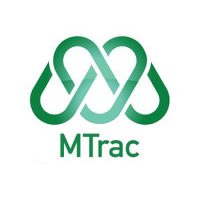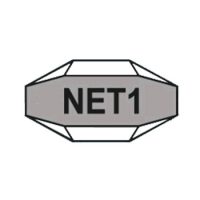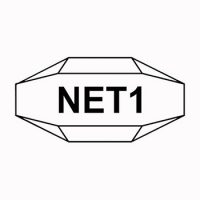Latest News
Road safety: Commission welcomes agreement on new EU rules to help save lives

 Reading Time: 3 minutes
Reading Time: 3 minutes
The EU institutions have reached a provisional political agreement on the revised General Safety Regulation. As of 2022 new safety technologies will become mandatory in European vehicles to protect passengers, pedestrians and cyclists.
New technologies on the market can help reduce the number of fatalities and injuries on our roads, 90% of which are due to human error. In May 2018, the Commission proposed to make certain vehicle safety measures mandatory, including systems that reduce the dangerous blind spots on trucks and buses and technology that warns the driver in case of drowsiness or distraction. Advanced safety features will reduce the number of accidents, pave the way towards increasingly connected and automated mobility, and boost the global innovation and competitiveness edge of the European car industry.
Commissioner Elżbieta Bieńkowska, responsible for Internal Market, Industry, Entrepreneurship and SMEs, said: “Every year, 25,000 people lose their lives on our roads. The vast majority of these accidents are caused by human error. We can and must act to change this. With the new advanced safety features that will become mandatory, we can have the same kind of impact as when the safety belts were first introduced. Many of the new features already exist, in particular in high–end vehicles. Now we raise the safety level across the board, and pave the way for connected and automated mobility of the future.”
The new mandatory safety features include (see full list here):
- For cars, vans, trucks and buses: warning of driver drowsiness and distraction (e.g. smartphone use while driving), intelligent speed assistance, reversing safety with camera or sensors, and data recorder in case of an accident (‘black box’).
- For cars and vans: lane-keeping assistance, advanced emergency braking, and crash-test improved safety belts.
- For trucks and buses: specific requirements to improve the direct vision of bus and truck drivers and to remove blind spots, and systems at the front and side of the vehicle to detect and warn of vulnerable road users, especially when making turns.
The Commission expects that the proposed measures will help save over 25,000 lives and avoid at least 140,000 serious injuries by 2038. This will contribute to the EU’s long-term goal of moving close to zero fatalities and serious injuries by 2050 (“Vision Zero”).
In addition to protecting people on European roads, the new advanced safety features will help drivers get gradually used to the new driving assistance. Increasing degrees of automation offer significant potential to compensate for human errors and offer new mobility solutions for the elderly and physically impaired. All this should enhance public trust and acceptance of automated cars, supporting the transition towards autonomous driving.
Next steps
The political agreement reached by the European Parliament, Council and Commission in so-called trilogue negotiations is now subject to formal approval by the European Parliament and Council.The new safety features will become mandatory from 2022, with the exception of direct vision for trucks and buses and enlarged head impact zone on cars and vans, which will follow later due to the necessary structural design changes.
Background
In recent years, the EU has introduced a range of mandatory measures, which contributed to an estimated reduction of 50,000 fatal traffic casualties per year. These measures include electronic stability control systems on all vehicles, as well as advanced emergency braking systems and lane departure warning systems on trucks and buses.
In 2017, the Commission launched a public consultation to gather stakeholder views on potential improvements to current vehicle safety measures. In May 2018, the Commission then proposed a review of the General Safety Regulation and the Pedestrian Safety Regulation, under the Third “Europe on the Move” set of actions. The revised General Safety Regulation goes hand in hand with an efficient safety management of road infrastructure, where the Commission’s proposal was agreed in February 2019.
The Commission also presented a Communication on Connected and Automated Mobility to make Europe a world leader for autonomous and safe mobility systems. As a first deliverable for connected mobility the Commission had adopted new rules that step up the deployment of Cooperative Intelligent Transport Systems (C-ITS) on Europe’s roads. C-ITS allow vehicles to ‘talk’ to each other, to the road infrastructure, and to other road users – for instance about dangerous situations, road works and the timing of traffic lights, making road transport safer, cleaner and more efficient.
Blockchain
Global Payment Gateway Industry Report 2024: Seamless Integration with In-Game Virtual Currency Systems Enables Payment Gateways to Contribute to the Monetization Strategies of Game Developers
Global Payment Gateway Market
Blockchain
Digital collective restores carbon market credibility through immutable smart contracts
Blockchain
Online Banking Market to Grow at CAGR of 14.20% through 2033, Key Takeaways of Digital Banking, Banking Ecosystem, Financial Giants & Disruptive Startups
-

 Blockchain Press Releases6 days ago
Blockchain Press Releases6 days agoCanaan Shines at Blockchain Life 2024 in Dubai
-

 Blockchain6 days ago
Blockchain6 days agoQuantum eMotion Files a Patent for Quantum-based Blockchain Wallet Under the Patent Cooperation Treaty (PCT)
-

 Blockchain Press Releases7 days ago
Blockchain Press Releases7 days agoBybit Institutional Report 2024: Institutions Become Bullish and Eye Challenger Chains, while VC Funding Resurges for Infrastructure, Gaming, and AI
-

 Blockchain6 days ago
Blockchain6 days agoPhoenix Group Engages BHM Capital as Liquidity Provider to Boost ADX Liquidity and Enhance Market Dynamics
-

 Blockchain6 days ago
Blockchain6 days agoElizabeth Warren Urges Treasury Secretary Yellen to Implement Strong AML/CFT Measures for Stablecoins
-

 Blockchain6 days ago
Blockchain6 days agoCrypto fans count down to bitcoin’s ‘halving’
-

 Blockchain6 days ago
Blockchain6 days agoTether USDT stablecoin goes live on TON blockchain
-

 Blockchain Press Releases6 days ago
Blockchain Press Releases6 days agoDWF Labs joins the Klaytn Governance Council












































